Tagged: Gemology
Below you will find fine jewelry university articles "tagged" with the topic: Gemology.
Fine Jewelry University
-

The Magic of Polarized Light
In this article we do a deep-dive on polarized light and how it is used in gemology. You'll learn what polarized light is and how it's used in our daily lives. You'll also see lots of great, visual examples of polarized light in action as it is used to help identify gemstones in our lab... read more »
-
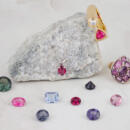
Gem in the Spotlight: Spinel
Spinel may be one of the most underappreciated gemstones in all of history. For centuries it has been confused with more popular gems like ruby and sapphire, and only recently have people begun to appreciate spinel for its own natural beauty. Commonly made in a lab spinel has been used a lower cost substitute for other gems, but natural spinel is actually a stunning gem in its own right. This in-depth article covers the gemology, history, and lore of this amazing and often overlooked gem... read more »
-
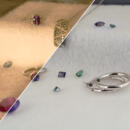
Gem in the Spotlight: Alexandrite
Emerald by day, ruby by night, more expensive than diamond and more illustrious than sapphire, emerald, or even ruby, alexandrite has been known around the world as one of the most sought-after gems for the better part of 200 years. But, what makes this stone so special? Gemology of Alexandrite Alexandrite is the extremely rare, color-change variety of a gem species called Chrysoberyl. It appears bluish-green in daylight, fluorescent light, and some LED light. Under incandescent light, candle, and firelight, alexandrite appears purplish-red. This is because of how the trace... read more »
-
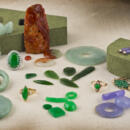
Gem in the Spotlight: Jade
Jade has one of the richest heritages of all gemstones. People have been using jade from as early as 6,000 BC, and it has been an incredibly important part of Asian, Central American, and North American history ever since. But, what is jade, and what has given it such a prominent place in human history? The term “jade” actually refers to two completely different gems: nephrite and jadeite. These are actually two unique mineral species, but since they have been confused for so many years, and are similar in many... read more »
-
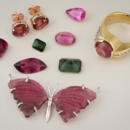
Gem in the Spotlight: Tourmaline
Tourmaline is a beautiful gem that comes in a huge variety of colors (sometimes even within the same stone). This article teaches you all about the history, folklore, and gemology of tourmaline including varieties like rubellite, indicolite, paraíba, and more. You'll also learn about California tourmaline and the unique piezoelectric property that has made tourmaline as useful as it is beautiful... read more »
-
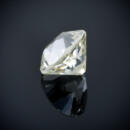
The History of Diamond Cuts
The cutting of diamonds is an art and science that has evolved over centuries of innovation and human ingenuity. See the history of diamond shapes and diamond cutting as we trace them all the way from the ancient Roman point cut to the modern round brilliant. You can see real photos of actual examples of most of the diamond cuts and 3D CAD renders of the oldest and most obscure diamonds that we weren't able to find a great example of (please email us if you have good photos or examples of any of these diamonds)... read more »
-
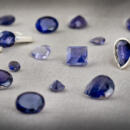
Gem in the Spotlight: Iolite
Iolite is maybe not the first gemstone people think of for their blue-violet jewelry, but it should be near the top of the list. Iolite’s color range of blue, blue-violet, and violet competes for public attention with sapphire, tanzanite, and amethyst. They may have name recognition, but iolite has a rich, unique color and great gem value on its side. It is more subtlety nuanced than amethyst and deeper than many tanzanites. Iolite’s name comes from its violet color. It is from the Greek word “ios” meaning violet. Unlike many... read more »
-
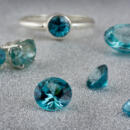
Gem in the Spotlight: Blue Zircon
Zircon may be last in the alphabet of gemstones, but it is first in sparkle. The crystal structure of zircon creates one of the liveliest displays found in any colored gem. In fact, before any of the manmade diamond simulates were made, the colorless version of zircon was used in jewelry to mimic diamond. Why? Natural zircon is known for its scintillation, brilliance, and flashes of color or fire just like diamond. Zircon also is known for its variety of colors. Blue zircon is the most popular color. But, zircon... read more »
-
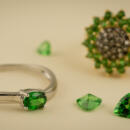
Gem in the Spotlight: Tsavorite Garnet
The discovery of Tsavorite in East Africa in the 1960s changed the jewelry world. Here was a gem with the color to rival the most exquisite emeralds and the clarity of the cleanest sapphires, all with the time tested durability of garnet. Tsavorite is a unique form of garnet with a stunningly vivid green color. It is bright and lively with a high refractive index giving it excellent sparkle and scintillation. Tsavorite is also a very rare gemstone. It is uncommon to find Tsavorite in sizes larger than five carats... read more »
-
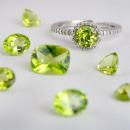
Gem in the Spotlight: Peridot
Peridot is a lovely yellow-green gem with a rich history. Legend has it that Peridot was the favorite gemstone of Cleopatra. The ancients called it the “gem of the sun”. It was believed that peridot could chase away evil spirits and dissolve curses but only when set in gold. Peridot is the birthstone for August. It is also the accepted anniversary gemstone for the 16th year of marriage. Peridot’s unique yellow-green color is very attractive. The name “Peridot” is simply a French word derived from the Arabic for green. Peridot’s... read more »
-
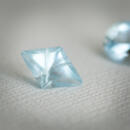
Gem in the Spotlight: Aquamarine
Aquamarine derives its name from the Latin which literally means “seawater,” a tribute to its beautiful blue color. As a member of the beryl family, Aquamarine has some illustrious cousins in addition to a rich history of its own. The Mythology of Aquamarine Long associated with tranquility and happiness, aquamarine was also thought to instill courage, cure laziness, and sharpen the intellect. The ancient Greeks used aquamarine often in jewelry believing it captured the true spirit of the sea. Best known for its beautiful blue color, aquamarine was used to... read more »
-

How Are Lab Grown Diamonds Made?
The dream of making a beautiful and valuable diamond from simple carbon has long captivated the imagination of scientists and visionaries alike. Just like the alchemists of old who sought to turn lead into gold, many have tried to achieve this impressive feat. We have only recently been able to produce gem quality, lab grown diamonds that are large enough to be used in jewelry. But, how is it done? Early Efforts Throughout history, many people have claimed to have successfully synthesized diamonds. However, it was not until relatively recently... read more »
-
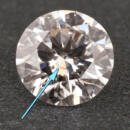
What Are Lab Grown Diamonds?
In the simplest terms, lab grown diamonds are diamonds that have been made by people instead of mined out of the earth. If it’s so simple, you might wonder why there’s an entire article below this sentence. The complexity arises from the fact that lots of different terms have been used to describe lab grown diamonds and their cousins, and not everyone uses these terms in the same way. So, let’s begin with some vocabulary. Synthetic. Understanding this term correctly is the key that unlocks this entire question. Synthetic can... read more »
-

How to Tell If a Diamond Is Natural or Lab Grown
How can I know if my diamond is real? This is a question we get all the time, and it’s not as simple as you might think. First, you have to decide what “real” means. If you are not familiar with lab grown diamonds, you might want to check out our introduction to lab grown and synthetic diamonds before continuing with this article. So, now you know that lab grown diamonds are just as real as natural diamonds, but we still want to be able to tell them apart. When... read more »
-
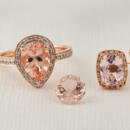
Gem in the Spotlight: Morganite
Morganite is a beautiful, soft pink gemstone and a graceful expression of elegance. It is not a very well-known gem, but it definitely should be. It is pastel or pale in color by nature and known for its transparent peach-pink hue though it also occurs as soft pink, violet-pink, or pale salmon. It is the subtle, understated nature of Morganite’s color that sets it apart from many of the more popular gemstones. Morganite has an impressive family tree. It is a beryl gem which puts it in the same family... read more »
-
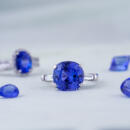
Gem in the Spotlight: Tanzanite
Beauty and rarity are two wonderful traits in a gemstone. Tanzanite has them both. In fact, it is estimated that Tanzanite is 1,000 times rarer than diamond. But, what makes Tanzanite so popular is its color. Tanzanite’s gorgeous color is a captivating mix of blue and purple. The deep hues of violet, indigo, and blue come together in an unrivaled blend only found in tanzanite. Yet, even with its rarity and dynamic look, tanzanite is still less in price than more commonly known gems like rubies, sapphires, and emeralds. Gemology... read more »
-
Frequently Asked Question about Jewelry
Here we answer some of your questions about jewelry in general. If you have a question you’d like answered, please contact us and we would be happy to help. What is a Gemologist? A gemologist is one who studies gems and jewelry scientifically, who knows and identifies them, can judge the elements and their beauty and value, and can apply this knowledge. This training and experience combine to make a gemologist. A gemologist like other professionals must keep up with current advancements in the field. The pace of change in... read more »
-
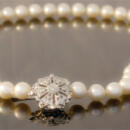
How to Clean Pearl Jewelry
Pearls are considered by many to be symbols of purity and chastity. But even symbols of purity get dirty from time to time. As you know pearls are produced when a mollusk secretes nacre to form a covering around a foreign body in its shell. Pearls are not as durable as gemstones produced by the heaving pressure beneath the earth’s surface. Therefore special attention should be used when cleaning them. Pearls should be the last thing that you put on and the first thing that you take off. Common personal... read more »
-
The Birthstones
This is a short overview of each of the traditional birthstones for all twelve months of the year. Most of the gems have more in-depth articles that you can read as well, but this is a handy reference to quickly learn which gem is associated with which month. We also touch on a bit of the gemology and folklore for each month's gemstones... read more »
-
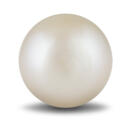
Gem in the Spotlight: Pearl
Pearls have been sought after and loved by people for hundreds of years of human history. In this in-depth article, we explore the science, history, and gemology of this incredible product of nature. Learn about famous pearls like La Peregrina, the seven value factors of pearls, the difference between saltwater and freshwater pearls, and much more... read more »
-

Gem in the Spotlight: Topaz
Topaz is a gemstone with amazing variety. Topaz is naturally colorless and clear like a diamond, but it can also take on an entire range of colors. Yellow to reddish-orange is known as Precious Topaz or Imperial Topaz. Imperial Topaz is one of the expensive varieties of Topaz. Gem suppliers can even bombard Topaz in a nuclear reactor to produce various shades of Blue Topaz. Topaz is the birthstone for November, and they make great gifts for anyone born in November, or for anyone that just likes beautiful jewelry... read more »
-
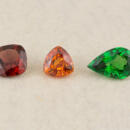
Gem in the Spotlight: Garnet
Garnet’s rich history and varieties demonstrate garnets are more than the little red gem. Garnets allow for great personal diversity and style. The wide world of garnets invites all to become a garnet fan. Garnet is January’s birth stone. January babies born in the midst of cold, white (valley fog) and at times stark surroundings are rewarded with one of the most varying birth gemstones…Garnet. Garnet’s pizzazz energizes the gloomiest day. Garnet varieties brighten the world in colors of yellow to gold, bright orange to true orange, brown to cinnamon... read more »
-
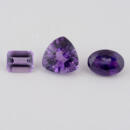
Gem in the Spotlight: Amethyst
Amethyst is known for its beautiful purple color, and it is the most important quartz variety used in jewelry. Purple has long been considered a royal color, so it is not surprising that amethyst has been in so much demand throughout history. Gemology Amethyst is a variety of quartz that is colored by the presence iron and aluminum. The violet color of amethyst can range from a pale lavender to a deep, dark purple, and it is often found in shades of pale to medium purple. Amethyst is typically found... read more »
-
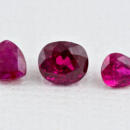
Gem in the Spotlight: Ruby
Ruby has been the most prized gemstone for much of human history. It's rich red color is spellbinding and it remains a symbol of power and success even to this day. It is a hard and durable gem that, with proper care, can be treasured for generations. It is also a useful gem as its unique optical properties made a crucial component in the world's first functioning laser. Let's dive in to the gemology, history, and lore surrounding the incomparable ruby... read more »